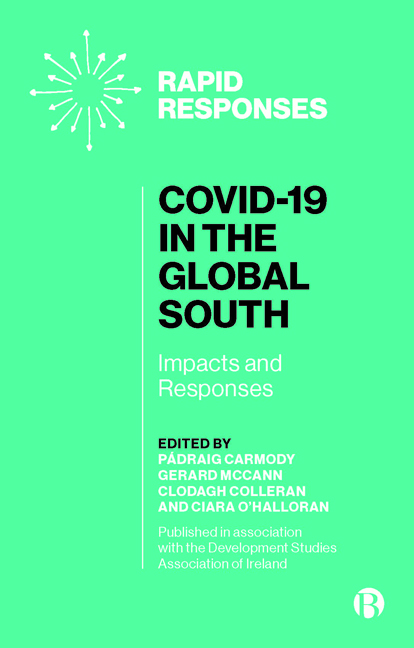14 - COVID-19 Lockdowns in Africa: Their Effects and Challenges
Published online by Cambridge University Press: 23 March 2021
Summary
It is necessary for African leaders and policymakers to utilize the rare opportunity opened up by the COVID-19 outbreak to unite behind a common purpose and strengthen public health systems and disease surveillance. Such a unity against the pandemic will make it easier for the World Bank and other donor or lending institutions to mitigate its negative effects. Strengthening regional cooperation of all health institutions in Africa and activation of stricter policies at the ports of entry, such as screening, testing and isolation of confirmed cases, will go a long way to forestall unexpected outbreaks. This chapter provides a general overview of how a few selected African countries have responded to COVID-19 and a critical view of the effects of the responses in six countries (Uganda, Rwanda, Kenya, Malawi, Nigeria and South Africa). These countries were selected based on the intensity of the COVID-19 response, their alarming COVID-19 situation and national events that could have affected the epidemic curve. By 30 March 2020, Uganda, Rwanda and South African government mitigation and response measures were rated above 90 per cent stringency according to the University of Oxford COVID-19 Government Response Tracker (University of Oxford, 2020). Kenya and Nigeria are among the top ten countries in Africa with the highest number of COVID-19 cases. Malawi was among the last African countries to confirm COVID-19 cases, and after it held its presidential elections on 23 June 2020 there was a rise in the number of cases.
General COVID-19 situation in selected countries
Figure 14.1 shows the cumulative curves for Covid-19 cases in the selected countries. Most countries saw their first cases in March 2020. Cases were generally few in April, but grew most visibly in May 2020. In May and June, the growth in cases was exponential for South Africa and Kenya, but slowest for Uganda and Rwanda. The curve for Nigeria shows a steady and near-linear growth to place the country among those with the highest number of cases. Compared to other East African countries, Kenya had the highest rise in the number of cases. In Malawi the number of infections there has surpassed Uganda and Rwanda. In the paragraphs below we narrate possible explanations for the curves. This is followed by a subsection on possible ways forward for different countries.
- Type
- Chapter
- Information
- COVID-19 in the Global SouthImpacts and Responses, pp. 149 - 160Publisher: Bristol University PressPrint publication year: 2020



